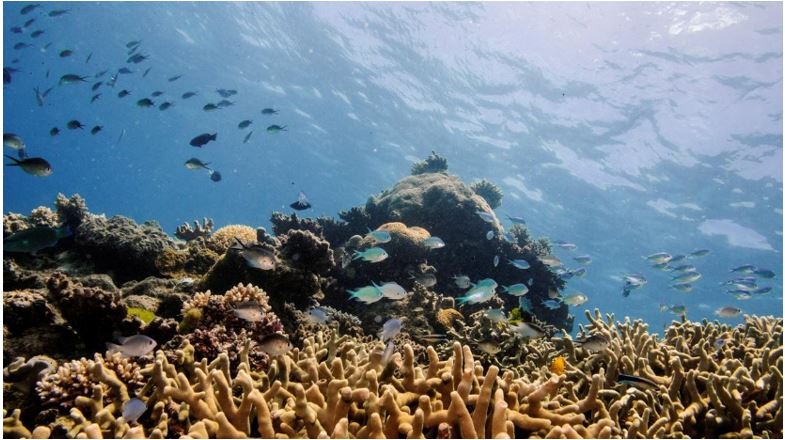Cryomesh and Frozen Coral
Why in the News?
While working on Australia’s Great Barrier Reef, scientists have successfully trialed a new method for freezing and storing coral in their first trial.
What is the Need for Freezing Coral?
- Scientists are working to conserve coral reefs because rising ocean temperatures threaten the fragile ecosystems of coral.
- In the past seven years, the Great Barrier Reef has had four bleaching episodes, including the first-ever bleach that occurred during a La Nia occurrence, which is known to bring colder temperatures.
- Coral larvae were frozen using the cryomesh by researchers at the Australian Institute of Marine Sciences (AIMS).
What is the Methodology of Freezing Coral?
- Cryomesh:
- Cryomesh was devised by a team from the University of Minnesota’s College of Science and Engineering.
- This is lightweight and can be manufactured cheaply.
- It better preserves coral and has the properties of cryoplates.
- The mesh technology will help store coral larvae at -196°C (-320.8°F).
- Significance:
- This cryogenically frozen coral can be stored and later reintroduced to the wild.
- But current process requires sophisticated equipment including lasers, however a new lightweight “cryomesh” can be manufactured cheaply and better preserves coral.
What are Coral Reefs?
- About:
- Marine invertebrates or animals without spines include corals. Corals are classified as belonging to the phylum Cnidaria and the class Anthozoa.
- The polyps that make up coral are genetically similar animals. In the tissues of these polyps, there are tiny algae called zooxanthellae.
- Algae and corals interact in a mutualistic way.
- The chemicals required for photosynthesis are supplied to the zooxanthellae by the coral.
- In exchange, the coral receives organic photosynthetic byproducts from the zooxanthellae, such as carbohydrates, which are used by the coral polyps to create their calcium carbonate skeletons.
- In addition to giving corals the nutrients they require, zooxanthellae are in charge of giving corals their distinctive and lovely hues.
- The “rainforests of the oceans” is another name for them.
- There are two types of corals:
- Hard, shallow-water corals—the kind that builds reefs.
- Soft corals and deepwater corals that live in dark cold waters.
- Significance:
- They support over 25% of marine biodiversity even though they take up only 1% of the seafloor.
- The marine life supported by reefs further fuels global fishing industries.
- Besides, coral reef systems generate USD 2.7 trillion in annual economic value through goods and service trade and tourism.
What is the Great Barrier Reef?
- It is the world’s most extensive and spectacular coral reef ecosystem composed of over 2,900 individual reefs and 900 islands.
- The reef is located in the Coral Sea (North-East Coast), off the coast of Queensland, Australia.
- It can be seen from outer space and is the world’s biggest single structure made by living organisms.
- It was selected as a World Heritage Site in 1981.
UPSC Civil Services Examination, Previous Year Question (PYQ) Prelims
Q.1 Which of the following have species that can establish a symbiotic relationship with other organisms? (2021)
- Cnidarians
- Fungi
- Protozoa
Select the correct answer using the code given below.
(a) 1 and 2 only
(b) 2 and 3 only
(c) 1 and 3 only
(d) 1, 2 and 3
Ans: (d)
Q.2 Consider the following statements: (2018)
- Most of the world’s coral reefs are in tropical waters.
- More than one-third of the world’s coral reefs are located in the territories of Australia, Indonesia and Philippines.
- Coral reefs host far more animal phyla than those hosted by tropical rainforests.
Which of the statements given above is/are correct?
(a) 1 and 2 only
(b) 3 only
(c) 1 and 3 only
(d) 1, 2 and 3
Ans: (d)
Q.3 Which of the following have coral reefs? (2014)
- Andaman and Nicobar Islands
- Gulf of Kachchh
- Gulf of Mannar
- Sunderbans
Select the correct answer using the code given below:
(a) 1, 2 and 3 only
(b) 2 and 4 only
(c) 1 and 3 only
(d) 1, 2, 3 and 4
Ans: (a)
Mains
- Assess the impact of global warming on the coral life system with examples. (2019)




